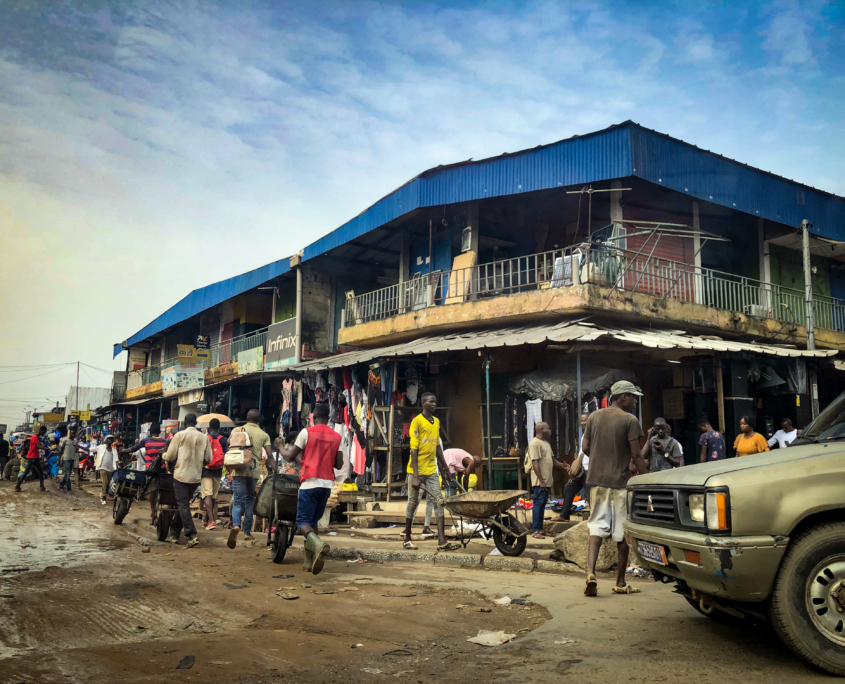5 Facts About The Construction Sector In Côte d’Ivoire
 Ivory Coast, also known as Côte d’Ivoire, is a country located in West Africa. Although it is mostly known as the largest producer and exporter of cocoa globally, another successful industry is emerging in the country. As of 2019, the construction sector in Côte d’Ivoire accounts for 10% of the workforce, making it the third-largest source of employment. This sector has contributed to economic expansion since 2012. The COVID-19 pandemic may have stunted the growth of this sector, but it is expected to grow at least 6% once the country resumes normal conditions.
Ivory Coast, also known as Côte d’Ivoire, is a country located in West Africa. Although it is mostly known as the largest producer and exporter of cocoa globally, another successful industry is emerging in the country. As of 2019, the construction sector in Côte d’Ivoire accounts for 10% of the workforce, making it the third-largest source of employment. This sector has contributed to economic expansion since 2012. The COVID-19 pandemic may have stunted the growth of this sector, but it is expected to grow at least 6% once the country resumes normal conditions.
5 Key Facts About the Construction Sector in Côte d’Ivoire
1. Growth of the Sector: In 2011, the transportation sector became a priority, increasing the need for the construction sector. Spurred by public investment in roads and urban areas, construction saw major growth in GDP from 2015-2018. Through the years, more local companies have gotten involved. An increase in funding will allow the sector to continue its growth before the COVID-19 pandemic.
2. Impact of COVID-19: Construction became more difficult due to the pandemic. An increase in health regulations, a decline in access to supplies and lockdown all stunted the construction sector’s growth. However, Ivory Coast was able to slow the economic impact of COVID-19. Not only did the International Monetary Fund (IMF) assist them with a financial package, but the country’s economic diversification and government’s effective emergency spending plan also helped them become one of the few Sub-Saharan African countries to continue to achieve economic growth.
3. Global Assistance: The growth of the construction sector in Côte d’Ivoire has resulted in much global interest. In fact, many businesses in China have funded construction projects in the Ivory Coast, such as a hydroelectric dam in Soubré and a motorway in Abidjan. There are many projects still in development, including three stadiums for the 2023 Africa Cup of Nations.
4. National Development Plan: The country’s new National Development Plan 2021-2025 intends to strengthen infrastructure development, which will help the construction sector’s growth. This agenda will also help increase exports and public investment.
5. Impact on Poverty: Ivory Coast has a high poverty rate despite its economic growth. As of 2020, the country’s poverty rate is at least 45%. If the construction sector continues its growth and increase in GDP, local construction projects will help develop an influx of jobs. As a result, the economy will continue to grow and help lower these rates of poverty.
Interweave Solutions
The nonprofit organization Interweave Solutions focuses on different sectors of a country. Their Masters of Business in the Streets, Literacy and Success Ambassador Programs allow for an increase in business understanding to improve homes and communities. By linking these three areas, this nonprofit works to increase self-reliance and lower poverty levels. This nonprofit wants citizens to have the ability to achieve a higher income by participating in these programs.
Ivory Coast’s construction sector will benefit from this nonprofit due to its unification of businesses and communities. The construction industry grew in GDP due to public investment, so Interweave Solutions’ focus on community involvement will continue to help the sector grow. The nonprofit’s focus on reducing poverty levels will help the country’s economy and help the GDP of the construction sector. The emerging construction sector of Ivory Coast has expanded over the years. Conclusively, The pandemic only serves as a roadblock for this construction’s economic growth.
– Mia Banuelos
Photo: Flickr
